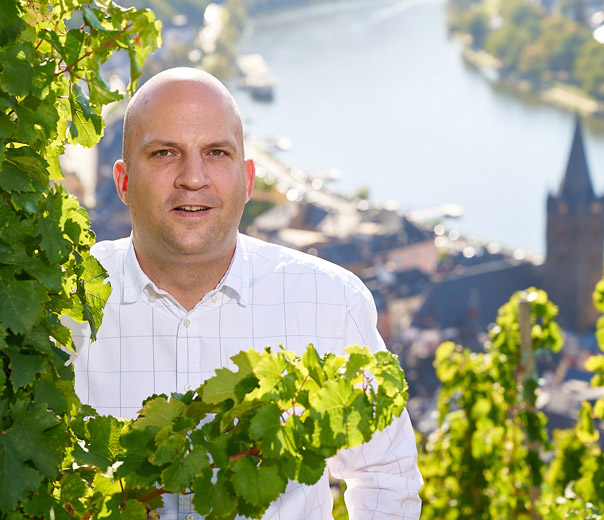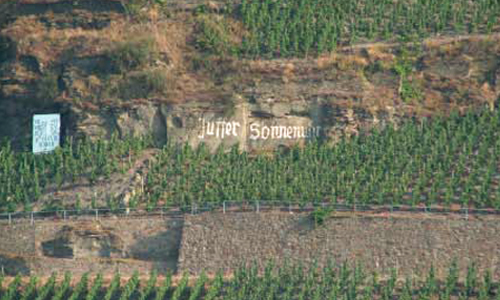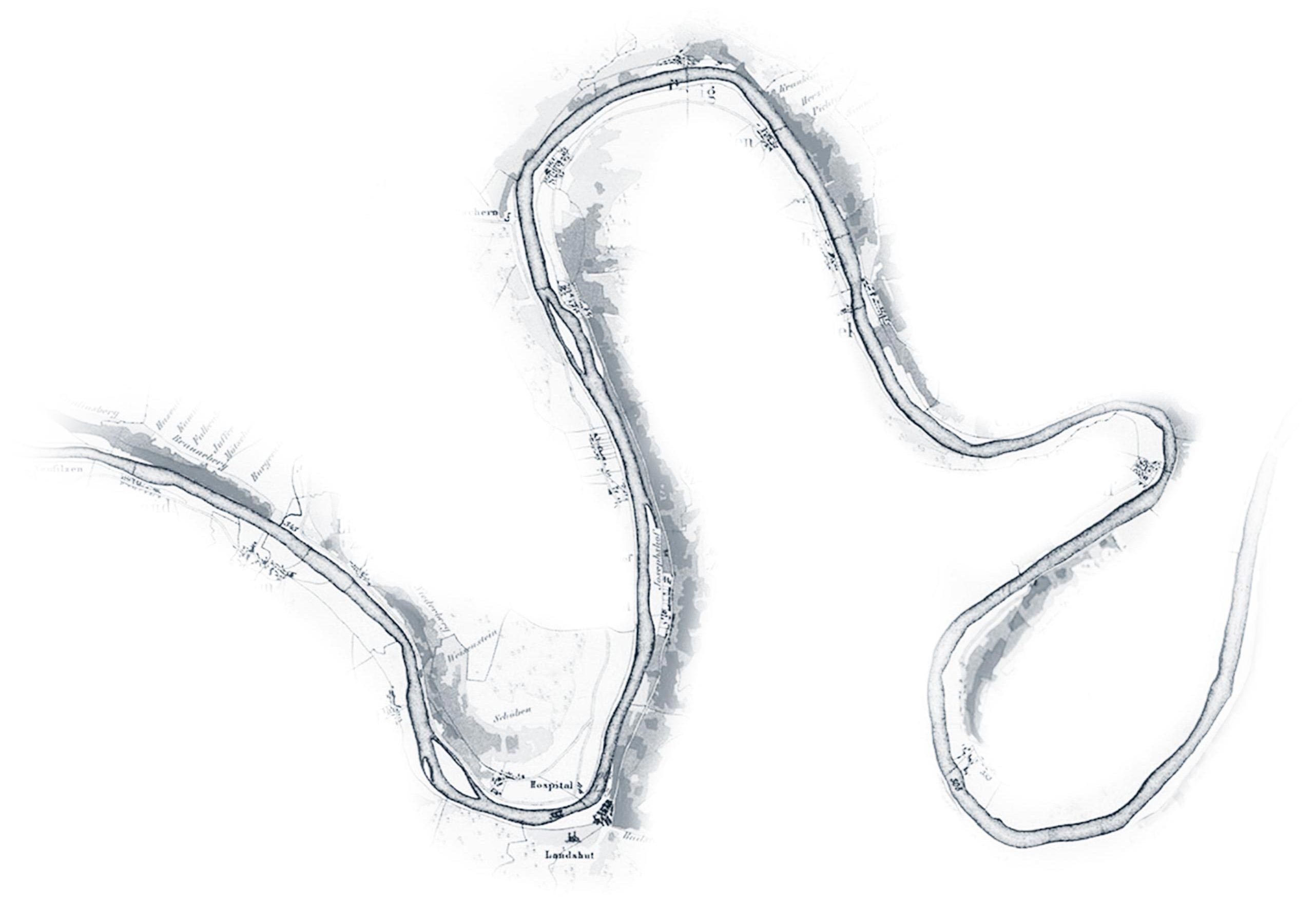

Extensive care of these vineyards, combined with intentionally low yields and selective handpicking, serve as guarantors for our extraordinary wines and their individual and unique character. Thereby the most important asset of the Dr. Pauly-Bergweiler Wine Estate consists of its vineyards.
Our quality orientation is continued in our work in the wine cellar. The Riesling grapes are processed in modern facilities just outside of Bernkastel. Our work flow is focused on gentle treatment of the grapes and the young wines. The wines are made carefully in order to insure that the typical tastes and aromas of a given vineyard are maintained.
We use small stainless steel tanks where the grapes of each different vineyard are fermented separately. We have 15 different vineyard sides between the villages of Brauneberg and Erden on a stretch of 20 km (12,5miles), and every single vineyard has its own character. The fermentation is temperature-controlled and kept very slow and at low temperatures to retain the diversity of aromas and the vitality of the wines.
Our collection of Riesling wines is very diverse. In most vintage years we have all the varieties found on a good wine menu, ranging from a juicy, hearty table wine to fine quality wine and further to a creamy, sweet dry berry selection.

The Bernkasteler Schlossberg is located directly under the Burg Landshut, an ancient castle that gave the vineyard its name. About one half of this vineyard is very steep, and that is the location of the Dr.Pauly-Bergweiler vines.
The southwest-facing slopes have elevations of up to 300 meters above sea level and are mainly formed by a strongly skelletized slate residual soil having a small portion of topsoil. This more rugged soil type brings lower yields and more concentrated minerality.
The castle was first mentioned in Bernkastel in the 7th century as “Primumcastellum”. In the year 1280 the castle came into the ownership of the Archbishops of Trier and was used as their summer residence.

The alte Badstube am Doctorberg is the best vineyard of the Dr. Pauly-Bergweiler wine estate It is only 1.8 ha in size and it is held to 100% in the hands of the Pauly-Family. As the name indicates, this vineyard is a neighbor to the famous “Bernkasteler Doctor” and the winegrowing conditions are quite similar.
The stony blue-grey clay slate is a residual soil having a very good heat-storing potential, which makes it possible to produce quality grapes for high-end wines. The high proportion of blue slate gives the wine a high content of minerals and finesse. Because of the age of the vines (in part more than 70 years old) the yield in this vineyard is very low – only 55 to 65 hl/ha.

Our largest vineyard is the Bernkasteler Badstube, where we have almost 6 ha of the total area of 68 ha, which begins at the northwest end of Bernkastel. The Badstube consists of the vineyards ”Alte Badstube am Doctorberg”, ”Bratenhöfchen”, ”Doctor”, ”Graben”, ”Lay” and ”Matheisbildchen”.
The main soil type in the Bernkasteler Badstube is a medium-deep clay-slated residual soil having varying parts of loam and stone mineral content. In some areas one encounters pure slate having a high mineral content. The old vines, grown by Moselle post-type training, produce every kind of high quality wine ranging from the elegant Kabinett to the full-bodied and noble Auslese (berry selection).

The Graacher Domprobst site has a special status in our winery and is the only one on which no Riesling grapes are planted. After the land consolidation in 1986, Dr. Pauly planted one of the first Pinot Noir vineyards on the almost 0.5 ha large area.
The soils are medium to deep, the stony clay weathered soil has a loam content in the topsoil. With the orientation near southwest, located on the lower steep slope, the location has the ideal conditions for the cultivation of red wine. Under a 5m thick layer of slate, a clay terrace ensures good water flow.
The name “Domprobst” refers directly to the Trierer Domprobst, who was entitled to a third of the “wine tithe” as a tax from Graach until Napoleon secularized it at the beginning of the 19th century.

“Graacher Himmelreich” is the largest single vineyard in the municipality of Graach, located in the immediate vicinity of Bernkastel-Kues. Many small parcels with a total size of approx. 1.2 ha are owned by the winery.
In the Graacher Himmelreich there are medium-deep, stony and fresh weathered clay slate soils with a small proportion of clay. The height above sea level is 110-260 meters, the slope is consistently steep. Full-bodied, juicy, and in some years also strong and noble Riesling wines mature here
The term “Himmelreich” refers to high places and good locations. Other sources assign the origin to the local Friedberg, where the Graach kingdom of heaven begins.

“Wehlener Sonnenuhr” (Sundial of Wehlen) is a vineyard located in the heart of the Middle Moselle wine region, directly opposite the well-known wine village of Wehlen. The small south-southwest-facing terraces reach up to 250 meters above sea level.
Bluish-grey, primarily stony slate from the Devonian Period forms an especially good reservoir for heat, storing the heat during the day and releasing it to the vines during cool nights. Deposits of loess and quartzite bring additional mineral components to the wine. The increased work demanded by cultivating the steepest area right around the sundial is rewarded each year by outstanding Riesling wines, largely produced from older self-rooted grapevines.
The sundial in the vineyards at the Wehlener Sonnenuhr location was erected in the 19th century by Jodocus Prüm, one of the ancestors of the Dr. Pauly-Bergweiler Estate. The Riesling wines from this vineyard have a fruity elegance combined with a lively character, and there is no doubt that these wines are among the best-known and most noble white wines in the world.

The 12-hectare Wehlener Klosterberg lies on the left side of the Moselle in a small tributary of the river. In 2006, the parcel with a size of 2.6 hectares was replanted by the Dr. Pauly-Bergweiler winery.
Here, at an altitude of 210-240m above sea level, the vines face south-east and put their roots in medium-deep clay slate soils with a high rock content. The Riesling wines that grow here are very similar to the Saar wines in their filigree elegance

Ürziger Würzgarten is one of the two vineyards in this municipality. With 1ha, this is the largest vineyard owned by the former Weingtus Peter Nicolay, whose headquarters are in Ürzig.
The vines are up to 320m above sea level. The orientation is south-southeast. The terroir is strongly influenced by the volcanic Eifel and is unique on the Moselle. Deep, stony slate soil (“Rotliegend”) and sandstone from the Buntsandsteinziet mix here and ensure a high heat storage capacity and varied mineral content.
The wines from ungrafted Riesling vines that grow here produce great wines with exotic, spicy aromas that cannot be found anywhere else.

The Ürziger Goldwingert vineyard is less than 0.3 hectares (0.74 acres) in size and is therefore one of the smallest vineyards in Germany. The vineyard has for generations been in sole possession of the Berres family, heirs to the former Peter Nicolay Estate, which was a dowry of Ms. Helga Berres when she married Dr. Pauly.
The vineyard starts at an elevation of 110 meters, nearly the same level as the Moselle River, and reaches up only 40 meters from bottom to top. Ürziger Goldwingert is bordered on three sides by high stone cliffs and faces south. Together with the surface of the Moselle River, this location creates a nearly Mediterranean microclimate.
The self-rooted Riesling vines grow on deep grey-red slate soil with a high stone content. The red color comes from oxidized red iron compounds in the soil which give this slate its German appellation “Rotliegendes” (red slate soil). Wines grown in the Ürziger Goldwingert have outstanding elegance combined with classy fruitiness and lively harmony.

The vineyard Erdener Prälat is also part of the property of the former Peter Nicolay Estate in Ürzig. It is located right next to Ürziger Goldwingert, but differs as a vineyard because of the structure of its soil.
The shallow to medium-deep weathered slate soil of this stony vineyard produces noble Riesling wines possessed of a fine fruitiness and having few equals. These wines justify the much greater amount of work required to cultivate the vines in this vineyard.

Erdener Treppchen is the larger of the two locations in the municipality of Erden. Like the “Prälat”, it is located on the opposite side of the Moselle from the small wine village.
The direct south orientation and the many rocks create a special microclimate here. The soils are medium to deep and consist mainly of stony, weathered slate. This is where fine, noble and classy Riesling wines with lots of fruit and elegance are produced.
The name “Treppchen” is a reduction of the Trappe (=stairs), but is probably also used in the Mosel-Franconian language to mean “terrace”.

The Braunberger Juffer-Sonnebuhr is the best piece from the well-known “Braunberger Juffer” vineyard. The plot of the winery Dr. Pauly-Bergweiler is one of the steepest and is therefore predestined for the production of particularly high quality every year.
The brownish soil (hence “Brauneberg”) is very shallow and has a high stone content. The fresh weathered clay slate soil has a pronounced mineral content and enables the production of elegant, classy wines with lots of play and lots of fruit.
In Moselle Franconian, Juffer is an older, unmarried woman; this circumscription indicates the possession of a nunnery. In fact, there was a Franciscan convent on the opposite bank of the Moselle.

Brauneberger Juffer is a well-known vineyard location on a steep slope which stretches parallel to the Moselle River from Kesten to the confluence of the River Lieser. On the Moselle River, it is located across the river from the town of Brauneberg.
The soil is medium-deep to shallow and has a very low content of fine earth. The weathered and stony clay slate soil gives the wine a strong mineral taste. Brauneberger Juffer wine is marked by robust and classy Rieslings having a lot of fruitiness.
Already in ancient days, the Romans were aware of this optimal location and used it for wine-growing. The old Roman wine press house at the foot of the vineyard is evidence for Roman wine production. The Dr. Pauly-Bergweiler grapevines in this vineyard are right next to this old pressing house.

We are pleased to welcome you in “Dr. Paulys Probier- und Studierkeller” (our tasting room). Grab the opportunity and taste our Riesling and our Pinot Noir collection. Where? In the chapel, in our vaulted 18th century cellar as well as in the chimneycellar or the “baroque saloon”.
Opening Hours from 7. May till 1. November 2022
(2. November 2022 till Eastern 2023 by appointment only:
Monday, Tuesday and Wednesday by appointment
Thursday and Friday from 14:00 till 18:00 Uhr
Saturday from 14:00 till 18:00 Uhr; we are offering a general, commented wine tasting at 16:00 p.m. (by appointment).
Sunday by appointment.
We are happy to help you plan your wine tasting; for prices or desired dates, please contact our office (Tel. +49 6531 3002, info@pauly-bergweiler.com or by post at Gestade 15 in 54470 Bernkastel-Kues); Office hours: Monday to Friday from 8:00 a.m. to 12:00 p.m.

